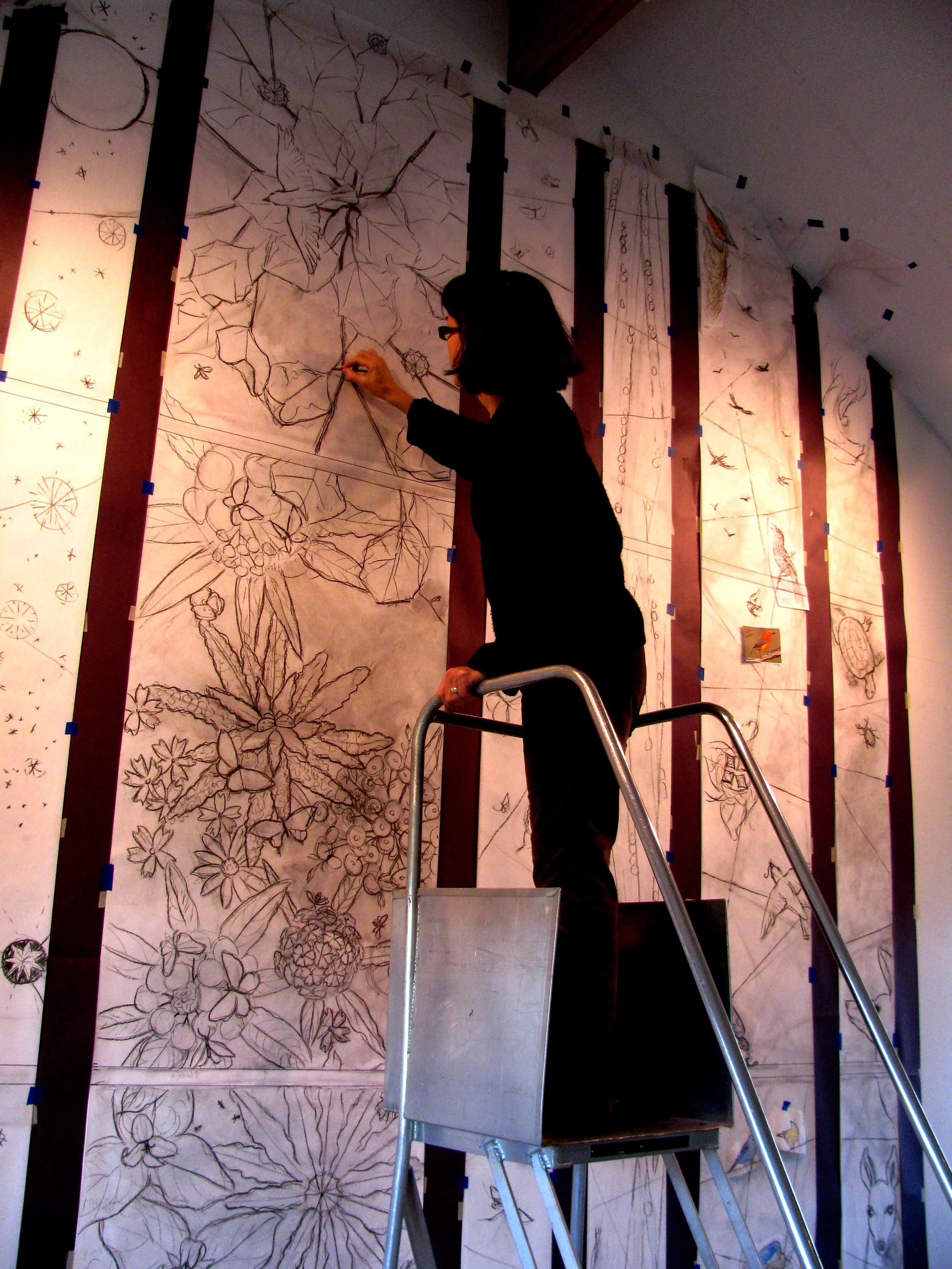Process
Conversation Research Design Fabrication Installation
I make windows which are permanently installed in a particular place. I begin every window project with a conversation about that place with passionate and interesting people who tell stories about their place, its history, character, and their feelings about it. I then endeavor to translate these stories, feelings, and my own response to a place into meaningful artwork for public and private spaces.
Artists have been creating stained glass windows for about 1000 years. For most of that time, windows have illuminated church interiors with religious narratives. Over its long history, some of the techniques and processes required to work with this ancient medium have changed with mechanical developments and technology. These changes have allowed for tremendous experimentation, moving the medium beyond church iconography to more diverse artistic and architectural applications.
In spite of the opportunities that many of these innovations create, I choose to employ ancient stained glass painting techniques, allowing me to render imagery literally glowing with pure light and color. The effect of this light and color on the viewer is tactile, uplifting, and unique. The visual storytelling I do is not within a religious tradition, but does benefit from the sublime effects of sunlight streaming through colored glass.
Stained glass painting is almost exclusively the application of black and brown paint onto pieces of colored glass. The paint contains pigment and powdered glass, and is fired onto the individual glass pieces in a kiln. To achieve a rich, modelled effect in rendering imagery, this painting and firing is done in several consecutive layers to each separate piece of glass, typically between 3 and 8 times. I estimate that glass painting takes up about 85-90% of my time in creating a project.
Many types of glass are available to create varying effects and solve various problems. I use antique (mouth-blown) glass, machine rolled glass, glass jewels and bevels, dichroic and textured glass. Other techniques I employ include etching, enameling, and including other types of glass objects.
After all cutting, painting and firing is complete, the individual glass pieces are assembled into the finished window panel. I use the traditional technique of running lead came around each piece as it fits against the next, like a jigsaw puzzle. The lead is then soldered wherever it is cut or meets another lead, on the front and back. The final steps are to force putty underneath the lead came, clean the excess off the glass, and apply reinforcing rods to create a rigid, archival window. All design, drawing, glass cutting, painting and assembly are done by me, by hand.









